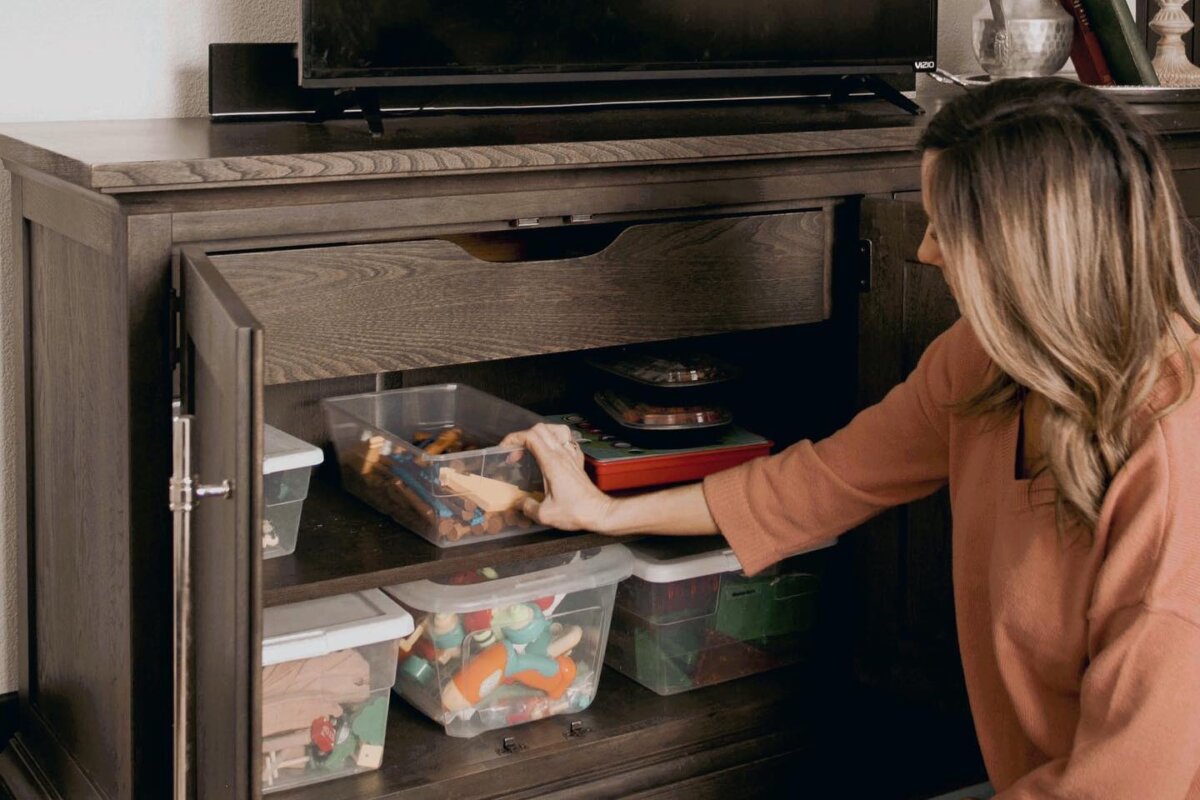How to Organize Your Books the KonMari Way

- Step 01Take Everything Off the Shelf
- Step 02Touch, Don’t Read
- Step 03Sort by Category (If Needed)
- Step 04Be Honest About “Sometime”
- Step 05Keep a “Hall of Fame” Collection
- Step 06Store with Care

Books often hold deep meaning — and just as often, they pile up. Whether you’re an avid reader or occasional bookstore browser, no one benefits from books collecting dust. They’re also heavy to move and occupy shelving space that could be used for other items you love.
Still, organizing a book collection can feel overwhelming, especially when you’re unsure of which books to keep and which to pass on to another reader (reselling books is such an excellent way to pay it forward!).
Thankfully, the KonMari Method™ brings clarity and care to this process, helping you cut through inner noise, so you can fill your bookshelves exclusively with the authors, stories and ideas that spark your innermost joy.
Here’s how Marie Kondo recommends organizing books, step by step.
Take Everything Off the Shelf
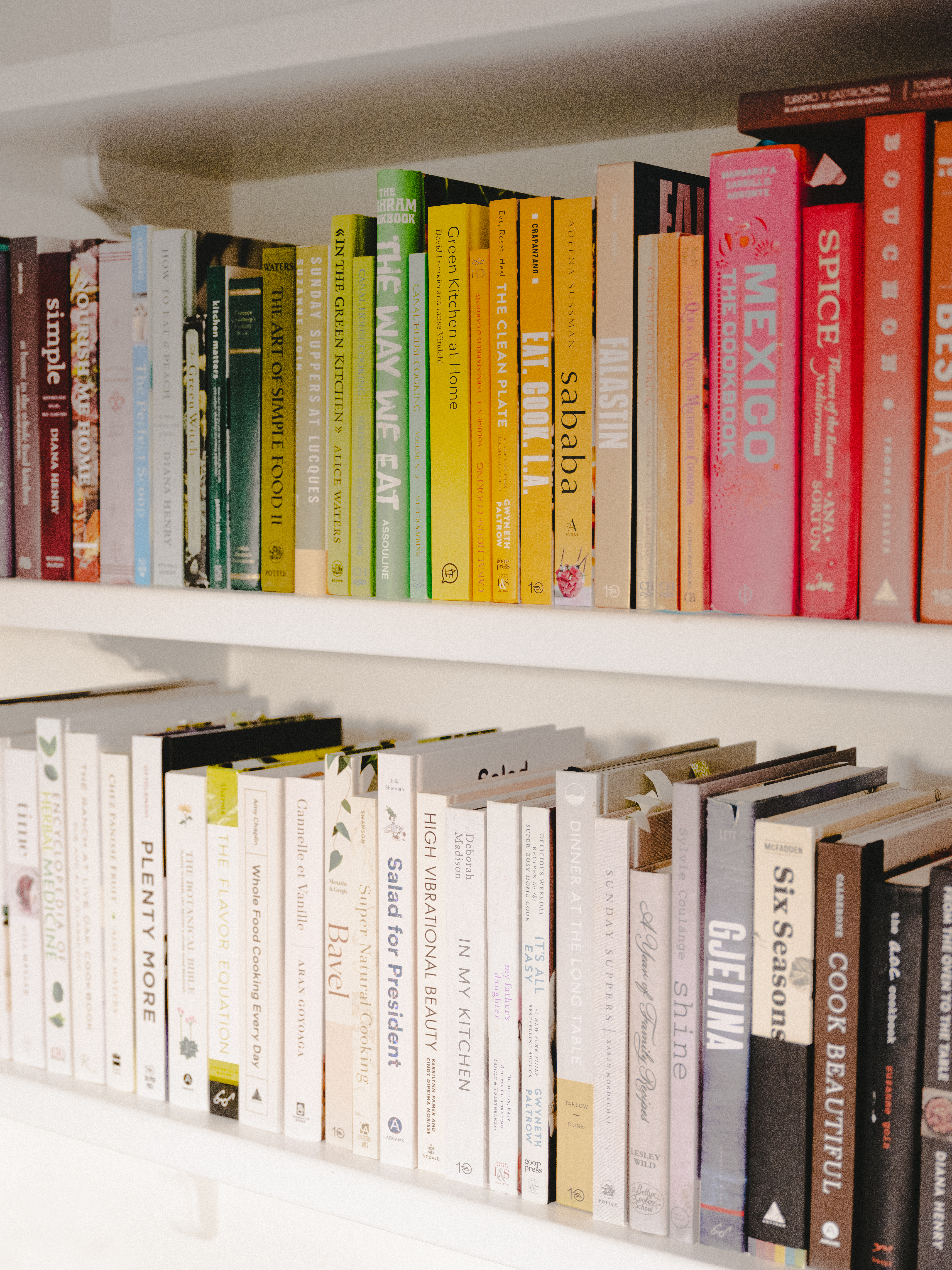
Start by pulling all your books from their shelves and placing them on the floor. If you store books in multiple places in the house, bring them all together.
This unshelving may seem extreme, but it’s essential. As Marie explains in The Life-Changing Magic of Tidying Up, books that sit untouched “remain unseen, just like a praying mantis still in the grass, merging with its surroundings.”
In other words: Our books tend to recede into the background if we don’t take time to give them deliberate attention. This does them and your home a disservice.
Handling each book individually awakens your awareness, and it also acknowledges the spirit of your books. They deserve to feel appreciated and seen.
Touch, Don’t Read
Pick up each book and notice how it makes you feel. But don’t flip through the pages. Not reading may feel counterintuitive, but as Marie says, “Reading clouds your judgment.” It’s also a form of distraction from the task at hand — when you finish organizing, you’ll have a whole list of books to look forward to reading.
Instead, your goal is simple. Ask: Does this book spark joy?
Then, notice your physical reaction. Does holding it bring you delight, comfort, or energy? Or does it feel heavy with obligation or guilt?
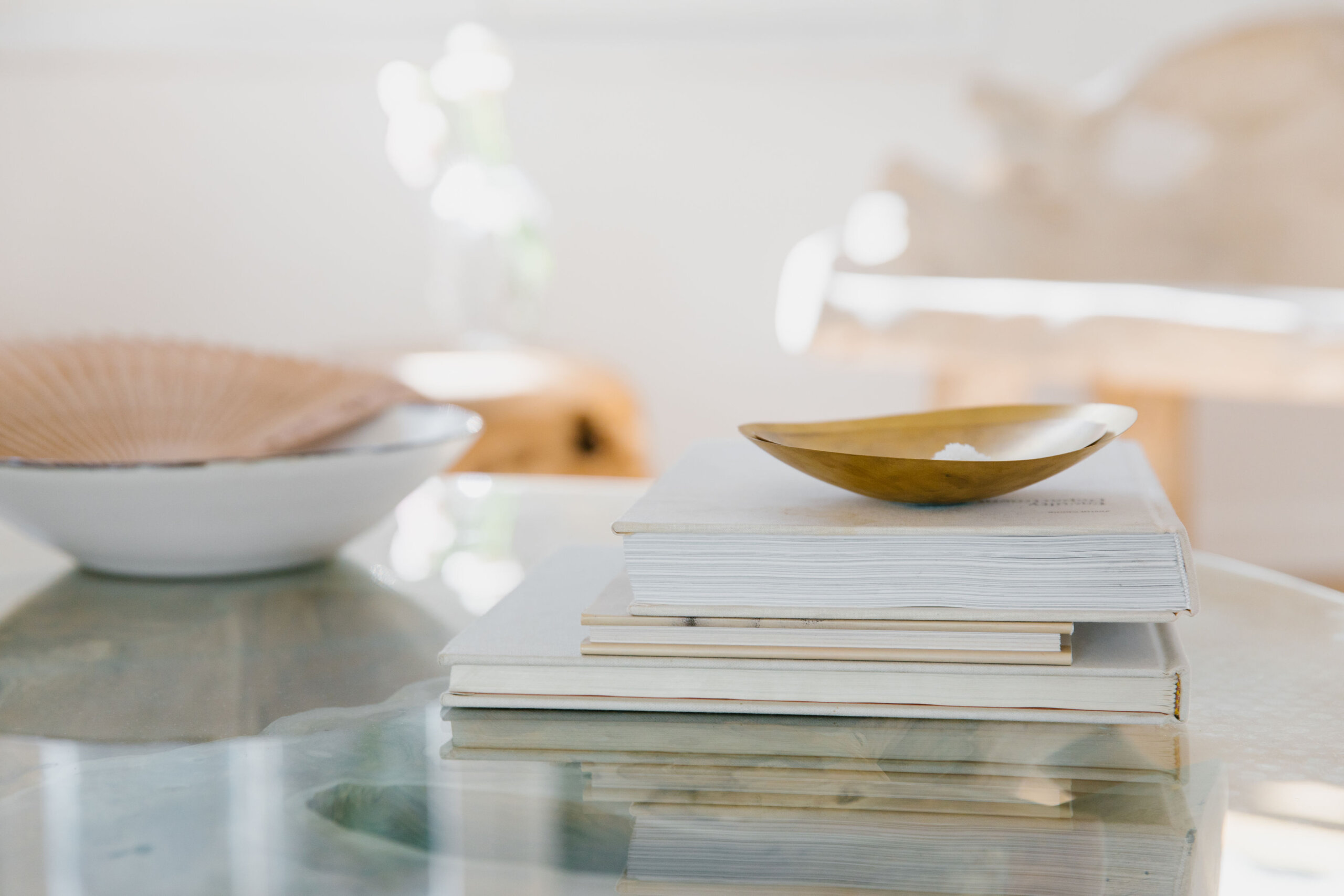
“Our books tend to recede into the background if we don’t take time to give them deliberate attention. This does them and your home a disservice. ”
Sort by Category (If Needed)
If you own a large number of books, the KonMari Method recommends sorting them into four categories:
- Pleasure (books you read for fun)
- Practical (reference, cookbooks, manuals)
- Visual (art, design, & photography — often referred to as “coffee table books”)
- Magazines, zines, and other periodicals
If your book collection is smaller, you may not need to use these categories and can focus instead on organizing by topic (Marie prefers going by topic over organizing alphabetically).
Be Honest About “Sometime”
We often hold on to books with good intentions, thinking, “I might read this someday.” But most of us never do.
If a book has been sitting unread for years, it’s okay to let it go.
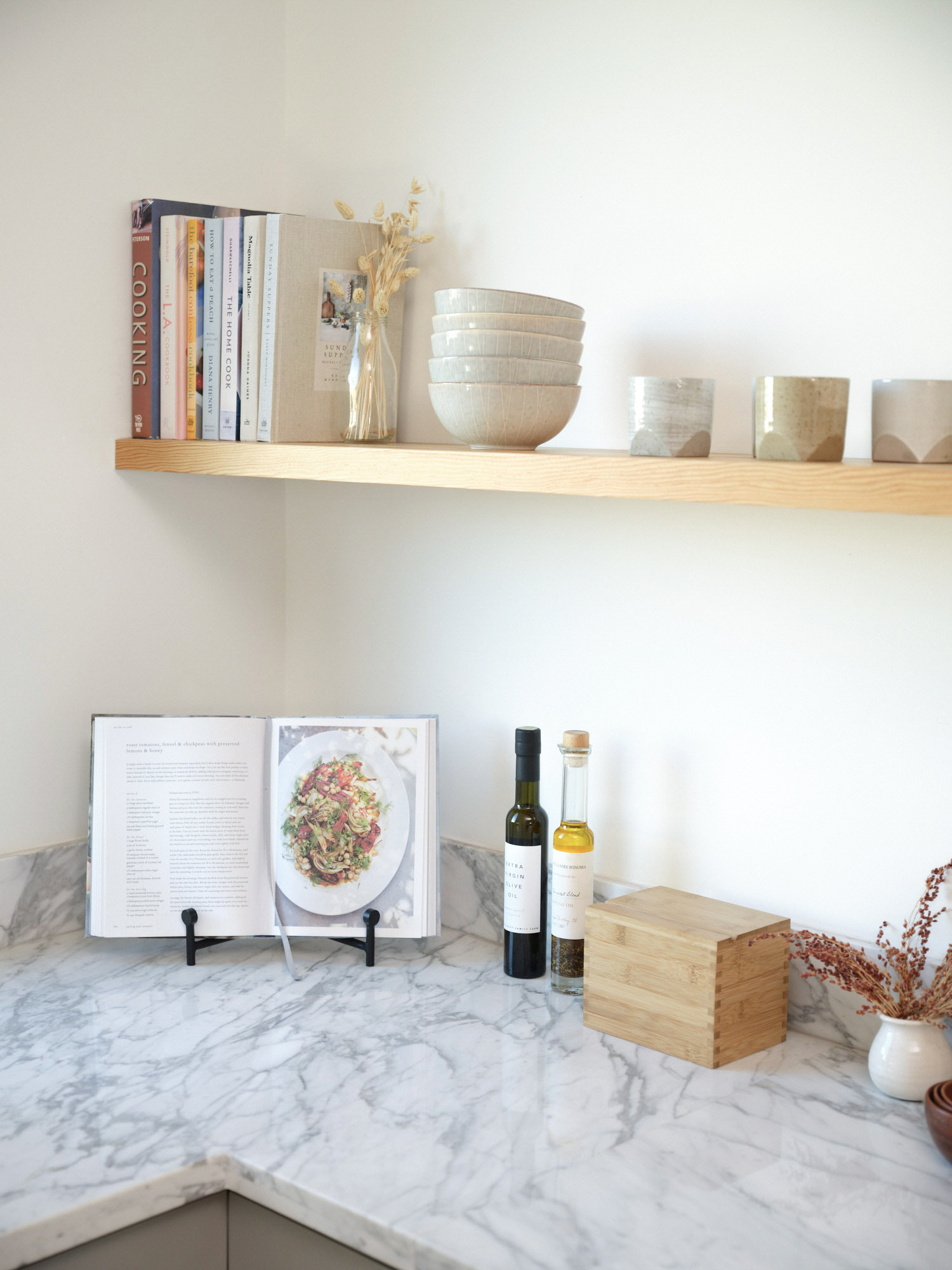
Keep a “Hall of Fame” Collection
This is not about discarding every book you own, especially if you’re an avid reader and books bring you joy. Instead, make the focus on that joy.
Create a stack of books that light you up — your all-time greats. These are books that spark genuine joy, the ones you’ve reread, that have changed your life or that feel like close friends.
Tidy tip: If a book moved you but doesn’t quite make the cut, consider copying down your favorite quotes before letting it go.
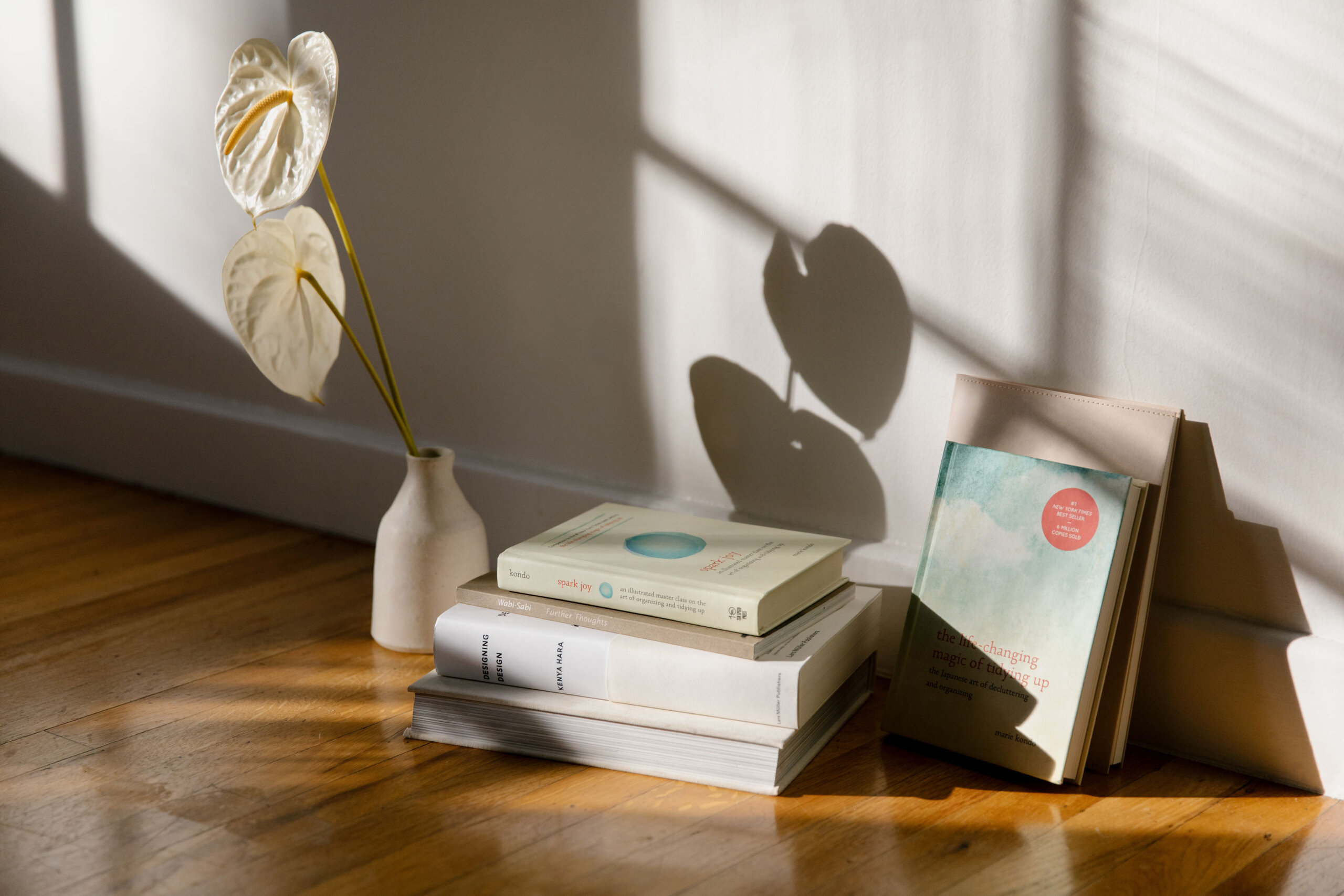
Store with Care
Once you’ve made your selections, return your books to the shelf with intention. Organize them by theme, color or frequency of use — whatever feels right to you.
Your method should reflect the way you think and read. If you sometimes crave memoirs and other times novels, organize those categories together so that you can shop your shelves. If you’re a visual organizer and can remember the color and design of every cover, going by color creates a beautiful shelf.
Above all: Let your shelves reflect who you are now, not who you used to be. This is your collection, and it should feel like a wonderful resource for you to revisit regularly and often.
***
When in doubt: Books are meant to be read, loved and appreciated — not just stored. Keep only what moves you, and let go of the rest with gratitude.




